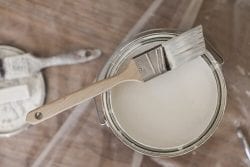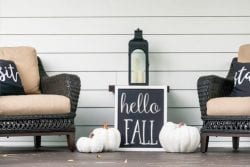WHAT TO PACK FOR THE FIRST NIGHT IN YOUR NEW HOME
Tue, 22 JunYou just finished unloading the final box from the moving truck, and now you’re officially moved in to your new home! You go to take a shower to wash off the day, only to realize you don’t have a shower curtain. After spending a full day moving into a new home, the last thing you are going to want to do is dig through all of your unopened boxes to find an outfit or a charger (or even a shower curtain). The next time you’re moving, create a ‘first night box’ so that your essentials aren’t hidden at the bottom of another box. Here is a list of what you should pack:
1. Toiletries
You may have thought about keeping your tooth brush in an easy-to-find place when packing, but you’ll need more toiletry essentials to get through the first night or two. Be sure to pack toilet paper, towels, a shower curtain + rod, shower items, and a first aid kit.
2. Clothes
Unless you are an extremely organized packer, finding an outfit for the next few days isn’t going to be easy if you have to dig through multiple boxes. Pack 2-3 days worth of clothes and pajamas.
3. Electronics
Don’t forget your chargers. Make sure you’ve got your phone, laptop, and any other charger you may need for your devices during the first few days at home. Pack any necessary cords and cables needed if you plan to unbox your television the first night Be sure to pack a flashlight as well just in case!
4. Air Mattress/Bedding
If your bed hasn’t made it to your new room yet, you will want to make sure you have an air mattress in your first night box. Check to ensure the air pump is packed as well! If your furniture is unloaded, you will sleep better if the bedding you love is easily accessible on that first night in your new home.
5. Eating Utensils & Kitchen Items
Avoid the mess of dirty dishes your first night home and pack disposable eating utensils. You may also want to pack wipes to quickly clean up any messes made at mealtime and a garbage bag to be able to dispose of any waste quickly. Cleaning supplies typically aren’t the first thing on our minds when moving into a new home, so be sure to pack these items so that you aren’t scrambling to the store after a long day when you’re ready to clean up after a meal.




 It is hard to believe that 2021 is here. With a new year under way, now is the time to start thinking about how you want to update your space in 2021. If you’re wondering how the design trends are looking for the new year, here is a great place to start!
It is hard to believe that 2021 is here. With a new year under way, now is the time to start thinking about how you want to update your space in 2021. If you’re wondering how the design trends are looking for the new year, here is a great place to start!

 If you have paint cans stacking up in your basement or closet because you aren’t sure whether to keep them or how to dispose of them, you’ve come to the right place! First, you will want to determine if the paint is still good or not. Any solvent-based paint typically has a 15-year shelf life. If you are able to stir it, it’s probably okay to keep for touch ups. Latex paint has a 10-year shelf life. If there is any way it could have frozen in storage, it may not be usable. You can test to see by stirring and brushing the paint onto newspaper. If there are lumps, the paint needs tossed.
If you have paint cans stacking up in your basement or closet because you aren’t sure whether to keep them or how to dispose of them, you’ve come to the right place! First, you will want to determine if the paint is still good or not. Any solvent-based paint typically has a 15-year shelf life. If you are able to stir it, it’s probably okay to keep for touch ups. Latex paint has a 10-year shelf life. If there is any way it could have frozen in storage, it may not be usable. You can test to see by stirring and brushing the paint onto newspaper. If there are lumps, the paint needs tossed.


